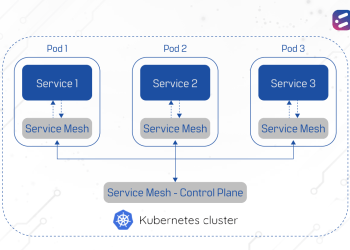The terms ‘Microservices’ and ‘Microservices Architecture’ refer to the same thing – the technique of developing a software application as a collection of loosely coupled services that can be developed, deployed, and maintained independently.
Microservices is a type of service-oriented architecture (SOA) where each of the services are fine-grained and, at the same time, responsible for a distinct task within the application. Each service communicates with other services through simple APIs, coming together to solve complex business problems.
When to employ Microservices
Microservices architecture is best suited to Agile development practices where application changes are expected to be dynamic, fast-paced, and on-demand. This is because a microservices architecture enables easy and efficient implementation of changes in specific elements of even large applications, without interrupting continuous delivery and deployment.
Monolithic Application vs. Microservices Application
A microservices-based application is the opposite of a monolithic application where all components of software were tightly packed together to form a single unit.
In a monolithic application, making a small change in any part of the application may require building and deploying an entirely new version. This often slows down the entire application and makes it challenging to scale specific functions of an application.
On the other hand, a microservices-based application is modular in nature, with larger numbers of small services. When changes are required to be made in a certain part of the application, only the related service(s) need to be modified and redeployed, and not the entire application. This makes the application itself more flexible to change and easily scalable.
Benefits of Using Microservices
- Greater Flexibility: Redeploying independent components of the application is possible without compromising its overall integrity
- Seamless Integration: Microservices-based applications communicate and integrate well with third-party services
- No Vendor Lock-in: Multiple technologies and frameworks can be used across the application
- Continuous Integration & Delivery: Both integration and delivery pipelines can be run simultaneously and efficiently
- Easy Scalability: Microservices can handle a large number of tasks or requests at the same time
- Code Maintainability: Changes can be made with simple code modifications on specific microservices
- Container Compatibility: Microservices work well with containers such as Docker
CloudNow delivers both custom development of applications and modernization of monolithic applications with Microservices Architecture and Containerization. To do this, we take on a solutioning perspective — we break down your problem statement into smaller problem statements and design solutions to each of these problems, integrating them together to form a complete working solution.
Interested in our services? Get in touch with us today!













